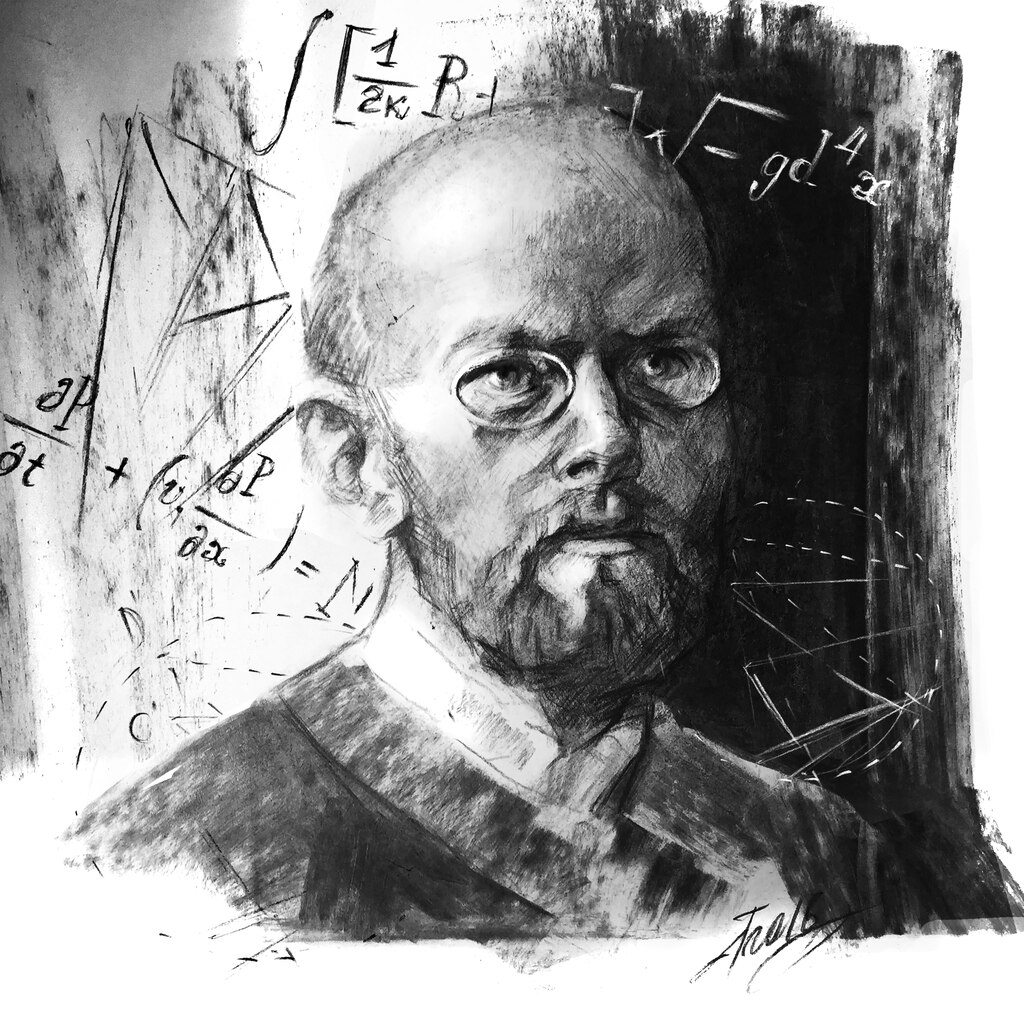Contents
Who Was David Hilbert?
David Hilbert (1862–1943) was a German mathematician and one of the greatest minds of his time. His contributions to algebra, number theory, mathematical logic, and the foundations of geometry shaped the trajectory of 20th-century mathematics. Hilbert was a strong proponent of the idea that mathematics should be built on rigorously formalized foundations, with clear axioms and logical deductions—much like Euclidean geometry.

The International Congress of Mathematicians, 1900
In August 1900, at the second International Congress of Mathematicians in Paris, Hilbert delivered a historic lecture titled “Mathematical Problems.” In it, he presented a list of 23 unsolved problems that, in his view, would define the future of mathematics. These problems indeed became a guiding framework for decades. Among them are the famous Continuum Hypothesis, the Riemann Hypothesis, and the Sixth Problem—which is the focus of this article.
The Essence of Hilbert’s Sixth Problem
Hilbert proposed the following:
“To treat in the same manner, by means of axioms, those physical sciences in which already today mathematics plays an important part; in the first rank are the theory of probabilities and mechanics.”
In other words, Hilbert dreamed of axiomatizing physics. He wanted the same kind of order and rigor for the physical world that he had achieved in geometry. His approach implied that physical reality could be reduced to a set of basic axioms from which the behavior of nature would logically follow. This was an extension of his formalist philosophy: if mathematics could be strictly derived from axioms, then physics, as an application of mathematics, should follow the same model.
Why the Sixth Problem Remains Unsolved
More than 120 years later, we can confidently say that Hilbert’s Sixth Problem remains unsolved—and more than that, it no longer even has a clear modern formulation. Here’s why:
- Physics does not lend itself to complete axiomatization. Observation and measurement in modern physics are inseparable from the system itself. In quantum mechanics, for instance, the observer affects the outcome—so they can’t be removed from the model.
- Axiomatization assumes all concepts can be formalized. But key categories like “time,” “causality,” “observation,” “event,” or “state” lack universally agreed definitions and are context-dependent.
- Physics is not just logic—it’s interaction with reality. It requires not just abstract structures, but also empirical grounding. Even if a model is beautiful and logically consistent, it can still be wrong if not supported by experiment.
- The collapse of the formalist program. Gödel’s theorems, published 30 years after Hilbert’s talk, shattered the hope of building a complete and consistent formal system even for arithmetic. If this is impossible even in arithmetic, it’s even more so in physics.
- Modern physicists no longer pursue axiomatization. Science has moved toward models, computation, and pragmatic approaches. Even in quantum field theory or string theory, there is no universally accepted axiomatic foundation.
Hilbert’s Philosophical Mistake
Hilbert made a crucial—though understandable—mistake: he assumed the success of Euclidean geometry’s axiomatization was a universal template for knowledge. But even by 1900, it was clear that Euclidean geometry was not the only possible geometry. The 19th century had already produced non-Euclidean geometries, such as Lobachevsky’s (hyperbolic) and Riemann’s (elliptic), which altered or discarded Euclid’s fifth postulate. This showed that geometry itself is not a description of reality, but just one of many logical models.
Later, with the development of General Relativity, it became clear that space-time is not Euclidean—it is curved and obeys Riemannian geometry. Thus, the axiomatic approach to geometry not only lost its absolute status, but was replaced by more flexible, context-dependent descriptions of nature. Nature—especially at quantum and cosmological scales—is not obliged to be geometric or logically closed in the classical sense.
Hilbert also implicitly assumed a meta-axiom that he never stated outright:
“Everything can be axiomatized.”
This is not a mathematical statement but a philosophical stance—one that can be reasonably challenged.
Conclusion
Hilbert’s Sixth Problem is not just a mathematical challenge. It is a mirror of an era—an era that believed in rationality, order, and determinism. But the 20th and 21st centuries have revealed that the universe is far deeper, more layered, and less formalizable than the great mathematician had hoped.
The attempt to axiomatize physics turned out to be more of a philosophical gesture than a scientific task. Today, it’s becoming increasingly clear that if a new foundation for physics is to emerge, it will rest not on axioms, but on meanings, interconnections, and the embedded observer as an integral part of reality.
Hilbert’s Sixth Problem remains open—not because it’s unsolved, but perhaps because it was misformulated from the very start.